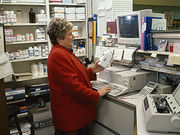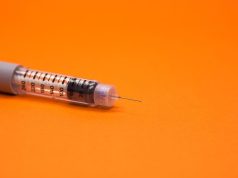Direct and indirect remuneration fees, copay clawback fees skew cost of prescription meds
THURSDAY, July 7, 2016 (HealthDay News) — Pharmacists often encounter fees imposed by prescription drug “middlemen” that adversely impact both pharmacies and patients and distort medication costs and reimbursement rates, according to a report from the National Community Pharmacists Association (NCPA).
A survey of 640 pharmacists conducted by the NCPA documents the scope and effect of direct and indirect remuneration (DIR) fees imposed on community pharmacies and increased costs for patients at the pharmacy counter through copay clawback fees.
According to the report, community pharmacies are sometimes assessed for DIR fees weeks or months after a medication is dispensed and the pharmacy is reimbursed. Sixty-seven percent of pharmacists reported that they were given no information about when fees would be collected or assessed and how much they would be charged. Fifty-three percent of pharmacists reported that fees were assessed quarterly, with many complaining about the time lag. Most pharmacists (57 percent) reported that fees now appear in some commercial plans. The financial impact of DIR fees was significant, with 87 percent of pharmacists reporting a significant impact on their ability to provide patient care and remain in business.
The survey also explored copay clawbacks on patients, which were relatively common, with 83 percent of pharmacists having witnessed them at least 10 times in the previous month. Two-thirds of respondents (67 percent) reported that the practice was limited to certain pharmacy benefit management (PBM) corporations. The findings also indicate that PBMs may impose a gag clause that prohibits community pharmacists from telling a patient that a medication may be less expensive when purchased at cash price.
Copyright © 2016 HealthDay. All rights reserved.








